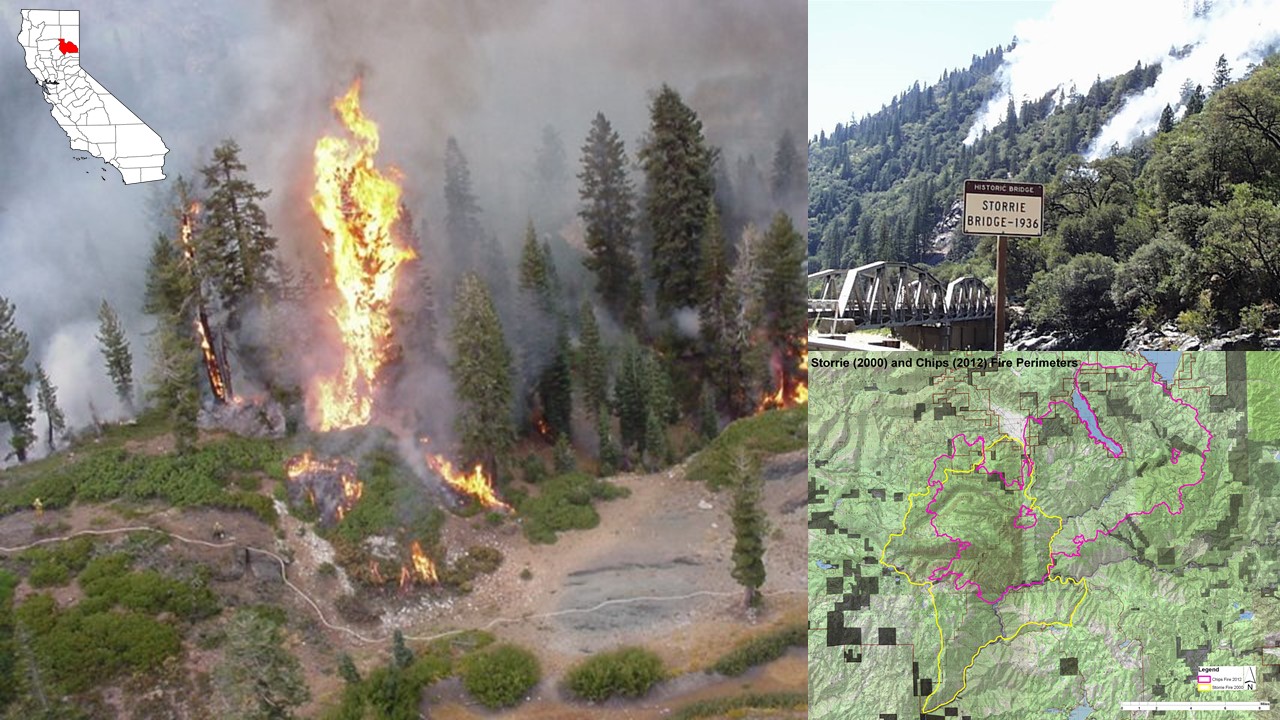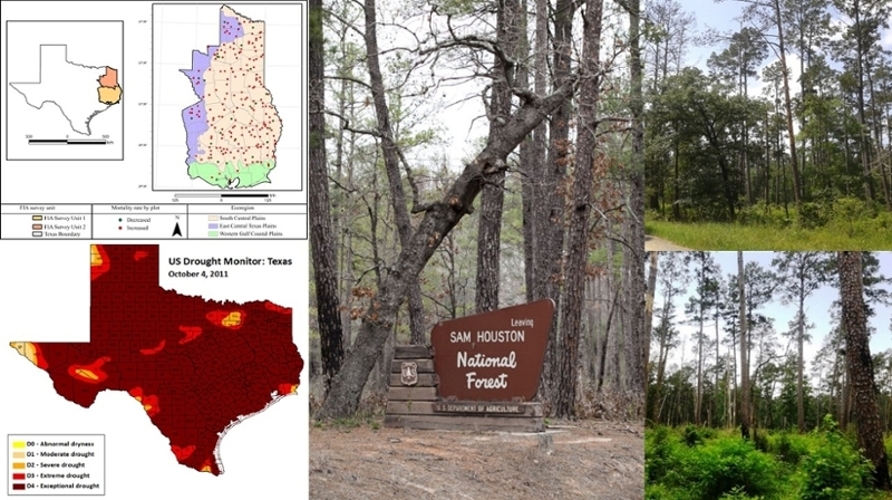Dr. Weimin Xi, associate professor and senior ecologist in the biological and health sciences department, is working on two studies that he hopes will help better understand wildfires and how people can prevent the devastation associated with them. His projects were funded by the United States Department of Agriculture’s Forest Service for a total of nearly $150,000.
The first of the studies, receiving $72,000 from the Forest Service, will look at the effects of wildfire and fuel-reduction treatments on forest structures around the Storrie fire and others in northern California.
The Storrie Fire started Aug. 17, 2000, at Storrie, California in Plumas County. Before it was brought under control Sept. 27, it had consumed 52,000 acres of private and National Forest System lands on the Mt. Hough Ranger District of the Plumas National Forest and the Almanor Ranger District of the Lassen National Forest. Suppression costs were estimated to be $22 million.
“I am trying to have a better understanding on how the California forests respond to large wildfires and then use the information we will learn to help landowners achieve more fire-resilient forests,” said Xi. “This includes how to manage before and after wildfires.”
The hypothesis is that thinning the forest by removing smaller, weaker trees, can improve the forest’s health thus making it more fire-resilient. Another part of the hypothesis is that reducing the fuel, including needles, grasses, small twigs and larger fuels such as shrubs, branches on the ground and downed trees, could make a forest resilient to fire.
“As we can’t burn the forests to test our ideas, we will use forest simulation models to test under different scenarios showing what the results would look like with different fire size, severity, portion of tree thinning, different fuel treatments combined with the varied drought under climate change and more,” Xi said.
“Overall, we are using forest simulation models to test the ideas of whether forest thinning and fuel reduction can reduce the number of wildfires, the intensity of the fire and if the forests can better adapt to fires,” he added.
Xi said understanding and quantifying the resilience of forests to wildfires is critical for forest ecosystem management.
“This understanding is essential for forest managers to achieve their management goals,” Xi said.
Xi’s second project was awarded $77,500 by the Forest Service. For this project, Xi will team up with Dr. Sandra Rideout-Hanzak, professor of restorative fire ecology in the Department of Range and Wildlife Sciences at Texas A&M-Kingsville.
In this study, they will investigate the short- and long-term effects of the 2011 drought on tree mortality in four national forests, Angelina, Davy Crockett, Sabine and Sam Houston, and surrounding areas of East Texas using National Forest Inventory and Analysis (FIA) data and a forest succession and drought model.
“We hypothesize that tree death rates are closely related to drought distribution and drought length and that oak trees experienced higher impacts than pine trees in the East Texas forests,” Xi said.
“Weather is the leading cause of tree mortality in Texas forests and drought has the biggest impact on forest health,” he said, “Understanding how drought affects trees under varying stand conditions is essential to mitigate its negative impacts on the sustainability of forests during global warming.”
Xi and Rideout-Hanzak will also examine interactions among drought, wildfire and insects under climate change to help landowners and resource managers to develop effective forest management strategies to mitigate negative impacts.
With a background in forest ecology, Rideout-Hanzak said she will be collaborating on designing the study methods.
“Wildfires are almost always a result of a drought combined with a dry, windy day, so drought affects fire,” she said. “With prescribed fire, we typically wouldn't burn during a drought because we want to make sure there is plenty of soil moisture when we burn so that plants can green up right away without missing a beat. If we burn during a drought, we are adding stress to plants that are already stressed.”
The first grant is for two years and the second is for three. Both will support graduate student assistants.




